Most of the information in this report comes from the monthly email I receive from John Bateman. He does public outreach for NOAA and in particular NCEI. I could find the same information and more on the NCEI website but John produces a good summary so I use it or most of it. I also sometimes add additional information from NCEI or other NOAA websites. The full NCEI report for 2023 can be accessed HERE.


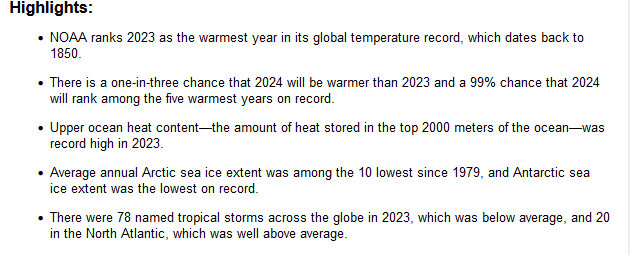
I added the below to what John Bateman provided.
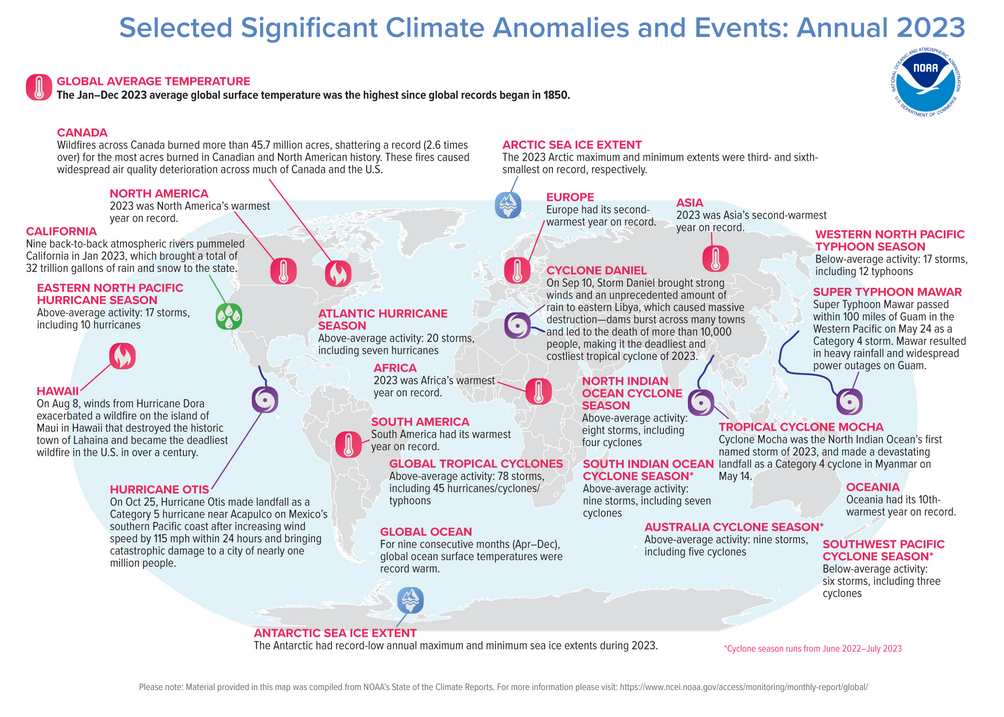
| 2023 was a busy year |
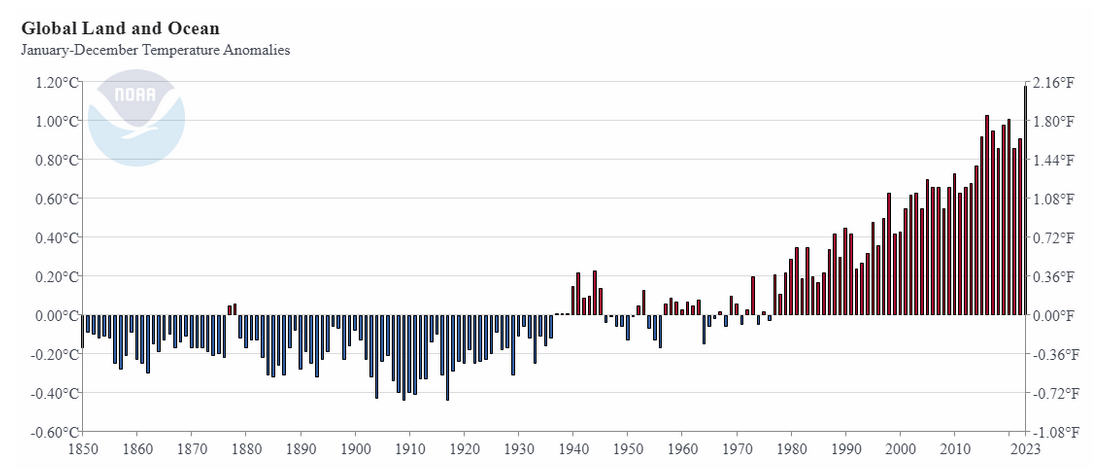
| This is the temperature trend for the world: land and water. There was a big increase in 2923. |
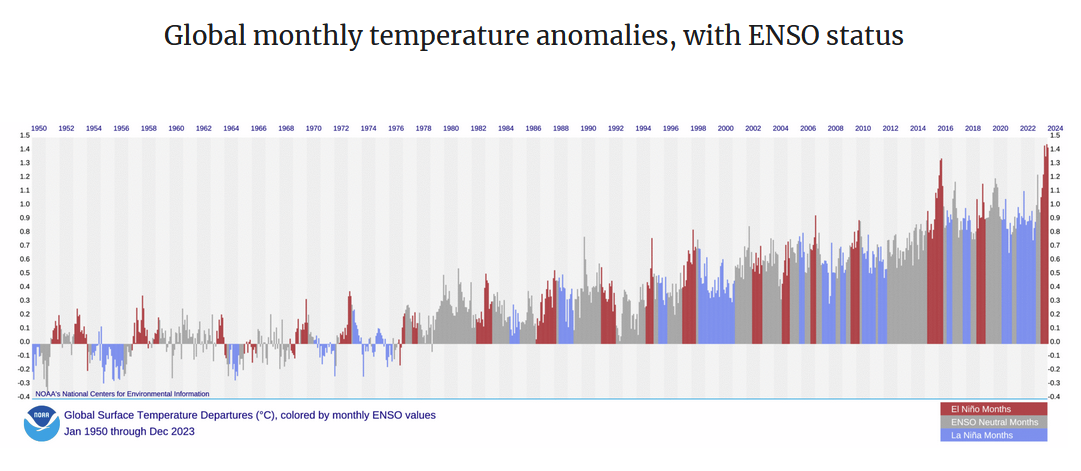
| This is also land and water [corrected previous error) and it is by month and it shows the ENSO state of each month. You can really see that the temperature goes up with the El Nino phase and down with La Nina. It has to do with the releases and absorption of heat by the oceans during the different ENSO Phases. A main reason for that is simple. During La Nina the strong Easterlies along the Pacific skim off the warm surface water is forced into the IndoPacific Warm Pool where it covers a smaller area. When the Easterlies relax during an El Nino the warm water spreads out so the Ocean Surface is warmer. There are other factors also. |
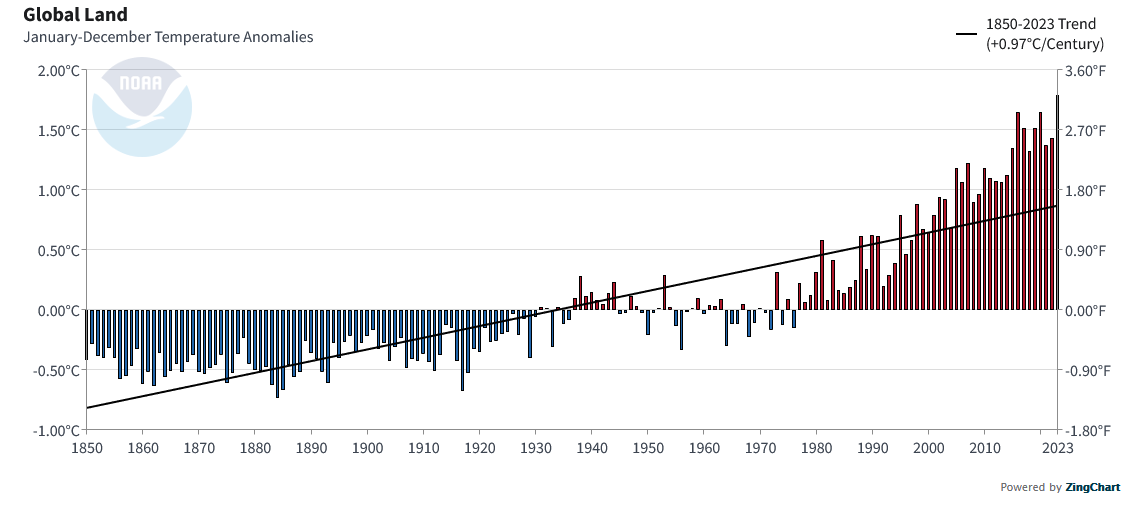
| This is just land Globally. It also increased in 2023 but not as much as when including both land and water. |
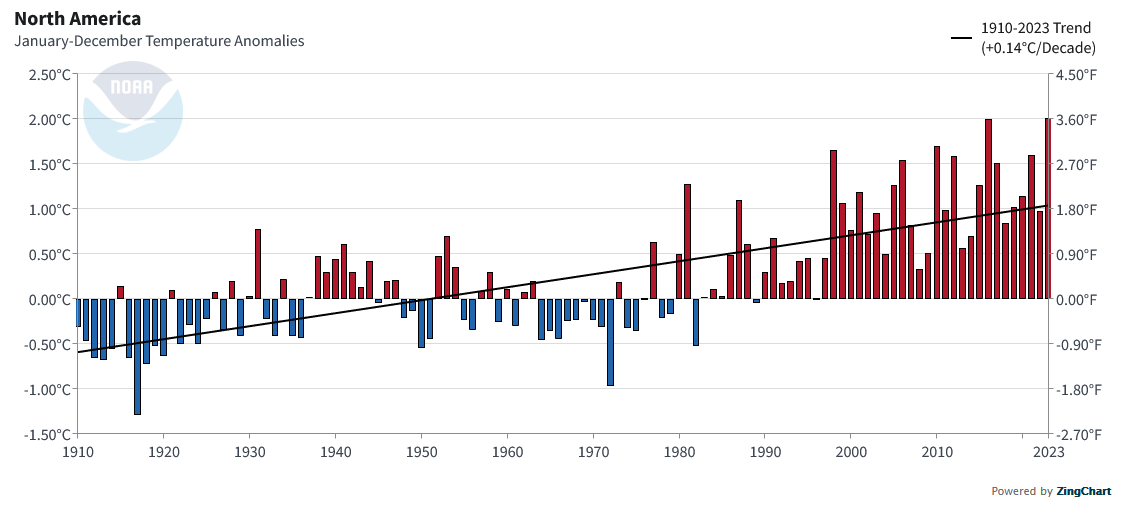
| This is for the year but just North America which in not just the U.S. but includes the U.S. 2023 seemed to match but not beat a year about seven years earlier. |
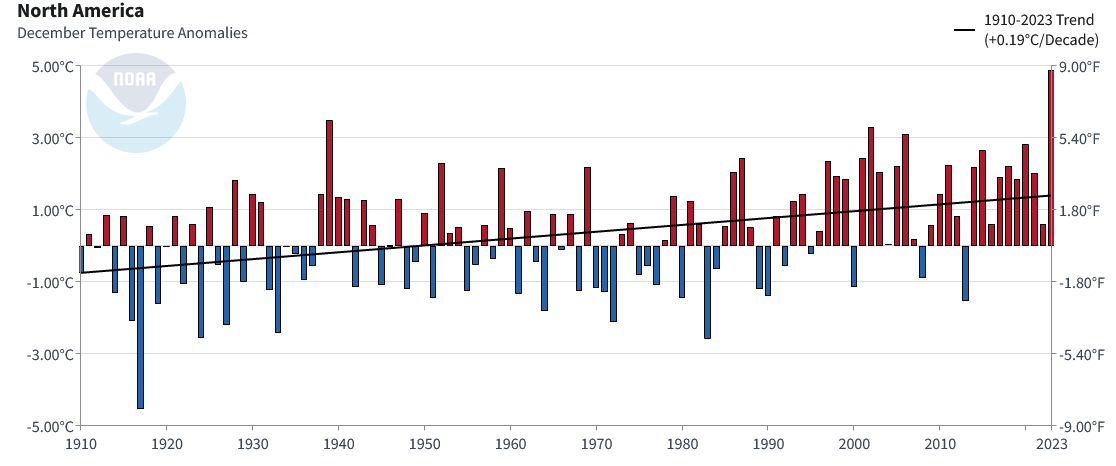
| This is December only for North America which includes the U.S. but more than the U.S.. 2023 saw a big increase. |
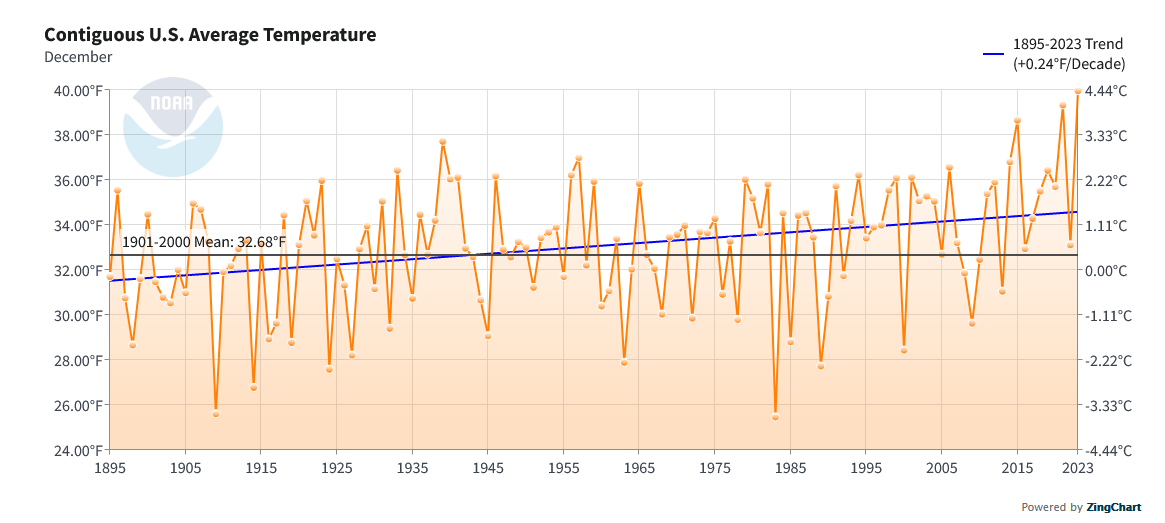
| This is just the U.S. for December and we have shown this before but you can see that the increase here is less than for North America probably because it does not include Alaska. I did not include enough graphs to make it easy to figure out but Northern Hemisphere has warmed more than the Southern Hemisphere. It probably has to do with the higher ratio of land to water in the Northern Hemisphere. When water warms it is not just at the surface so the impact of Global Warming on the surface of water is less than the impact on the surface of land. |
Now we present the rest of Bateman’s article for World Climate in 2023
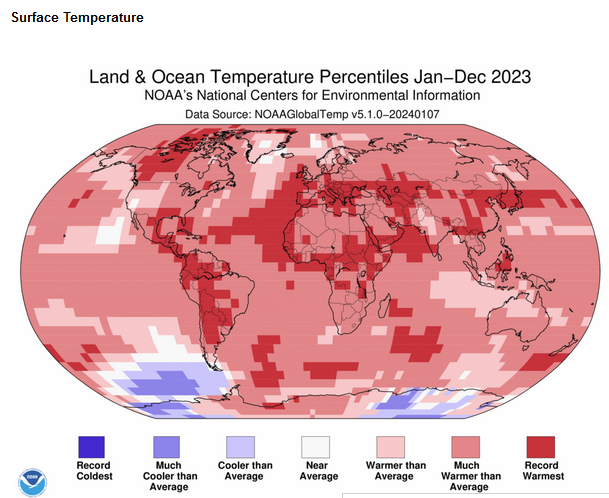
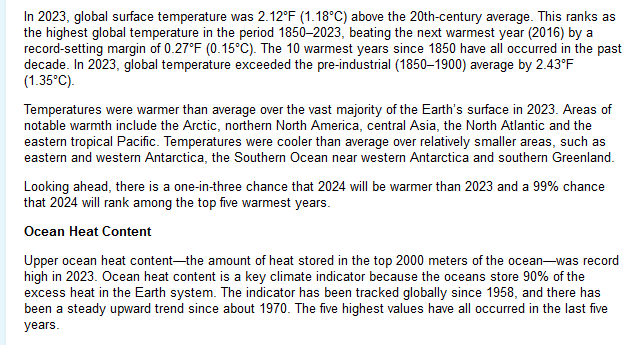
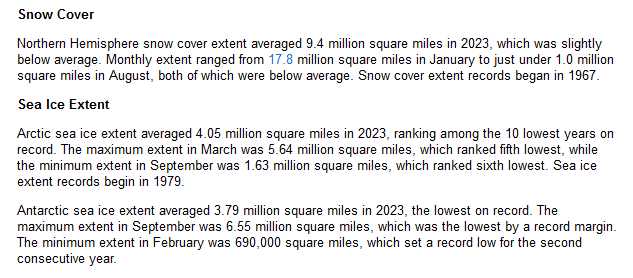

| And now he focuses on just the single month of December for the last two images. |
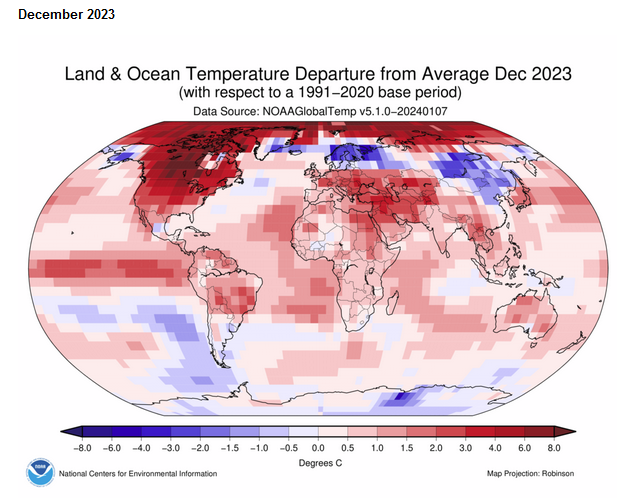
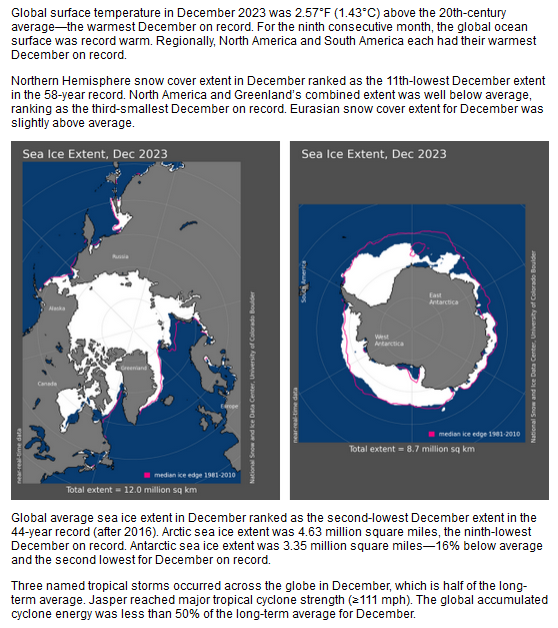
Resources
https://www.ncei.noaa.gov/access/monitoring/monthly-report/global/202311
https://www.ncei.noaa.gov/access/monitoring/monthly-report/national/202311
https://www.ncei.noaa.gov/access/monitoring/climate-at-a-glance/global/time-series/globe/land_ocean/1/11/1850-2023
https://www.ncei.noaa.gov/access/monitoring/climate-at-a-glance/national/time-series
–
| I hope you found this article interesting and useful. |
–